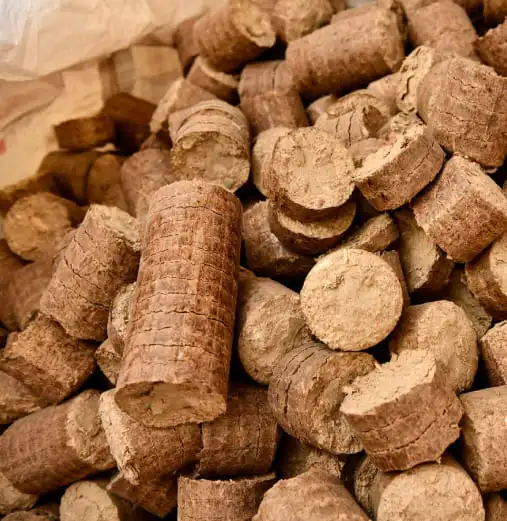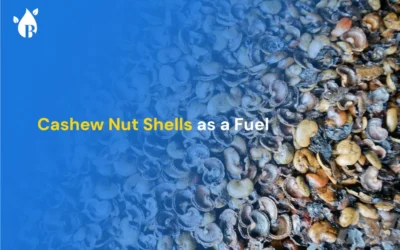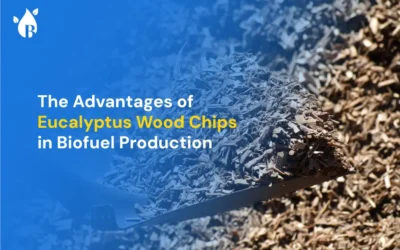
The more comfortable human lives get, the more energy we demand and consume. Fossil fuels like coal, oil, etc., have remained the primary sources of energy thus far. Non-renewables are limited in supply, and their depletion is a matter of concern. Their high emission intensity is also worrisome as it impacts the quality of human life and biodiversity. Biomass has evolved to be a sustainable alternative fuel to fossil fuels.
What is Biomass?
Biomass is a fuel that is developed from organic materials like plant waste, animal waste, municipal waste, forest and wood waste, etc. In developing countries, biomass has become an important source of energy, substituting for renewable sources to a notable extent.
A lot of times, we encounter questions on biomass as to “Is it really a renewable source of energy?”. Biomass is purely organic, and the energy is derived from plant wastes and animal residues. When we whirl back to the inherent source of biomass, it is the sun, algae, etc. They have the power to regrow in a shorter span of time. Hence, biomass is purely a renewable source of energy.
About Biomass Briquette Market
Countries across the globe are on a spree to reduce their carbon emissions and achieve their NDC (Nationally Determined Contributions) targets of net zero by 2050. Individuals also have increased awareness of the hazards of increasing emission levels and the importance of migrating to renewables.
Given the environment concerns, biomass briquettes are gaining prominence, and the market was valued at 121.34 billion USD in 2021. It is expected to grow at a compound annual growth rate (CAGR) of 6% between 2022 and 2030.
Wood briquettes are made using by-products from wood processing industries, including wood chips, sawdust, etc.
How to make briquettes from wood shavings?
If you are interested in knowing how to make wood briquettes or how to make wood chip briquettes, the following section describes the steps in sequence.
#1 Crushing the wood shavings and wood chips
Wood shavings and wood chips are in different sizes and shapes in their original form when derived from the wood processing industry. The very first step is to crush the wood shavings and wood chips into a size that is optimal for making wood briquettes. Crushing them to a size less than 3 mm helps achieve higher quality. Reducing the size of wood chips also reduces the wear and tear on the machine used for making wood briquettes.
#2 Drying to adjust the moisture content
The next step in wood briquettes manufacturing is to adjust the moisture content of the crushed wood chips. If the moisture content in the crushed wooden chips or shavings is more than 15%, they stick to the inner walls, damaging the machine parts. On the other hand, if the moisture content is lower than 8%, molding them into briquettes becomes hard. So, it is important to maintain the optimal moisture content while making wood briquettes.
#3 Transfer the raw material into the briquetting machine
The third step in making wood briquettes is to transfer and feed the crushed and dried wood chip materials into the briquetting machine. Generally, there are two types of wood briquette press machines In the market – 1. Mechanical stamping briquette press 2. Screw briquette making machine.
#4 Cooling, packaging, and storing
Fresh wood briquettes are hot and carry a certain temperature. They must be cooled before being packed and transported. If the output quantity is small, spread them out in a well-ventilated area and allow them to dry naturally. Otherwise, use a cooler to reduce the temperature of the wood briquettes. You can then pack and store them for sales.
Wood Briquettes for Sale
There are a plethora of uses for waste wood briquettes, and they carry several advantages compared to traditional fuelwood. Wood residues, wood chips, and wood shavings are produced in large quantities on a day-to-day basis. As a result, the potential for producing wood briquettes expands.
Wood briquettes can substitute for traditional wood in several ways.
- Waste wood briquettes are environmentally friendly when compared to fossil fuels. Wood wastes normally end up in landfills, and making them into wood briquettes helps reduce waste and residues.
- They occupy less space than traditional wooden logs.
- Wood briquettes are easier to transport and store when compared to traditional logs.
- Evidence shows that wood briquettes produce 50% more heat than traditional logs.
- Low moisture, smokeless wood briquettes minimize the smoke produced while burning.
- As the moisture content in wood briquettes is lower than 10%, they do not pile up on the chimney and flue as much as cord wood.
- Wood briquettes are carbon neutral, and they help accelerate the achievement of emission reduction targets.
Final Thoughts
Wood briquettes have a high potential to substitute traditional logs, fossil fuels, and other renewable energy sources. Wood briquettes, composed of wood chips, wood shavings, and sawdust, occupy less space. Hence, they are easy to store and transport. Because they are made from organic materials and the inherent source of wood briquettes whirls back to algae, the sun, and plants that have the power to regrow soon, wood briquettes are environment friendly.
Looking for Cheap Wood Briquettes?
Buyofuel is a leading online platform that connects all briquette stakeholders in India. If you are looking for the best wood briquettes, Buyofuel is your go-to spot. To know the price of wooden briquettes in India, visit https://buyofuel.com/. Please contact us at +91 86067 82055.
Alternatively, you can write to us at [email protected].



